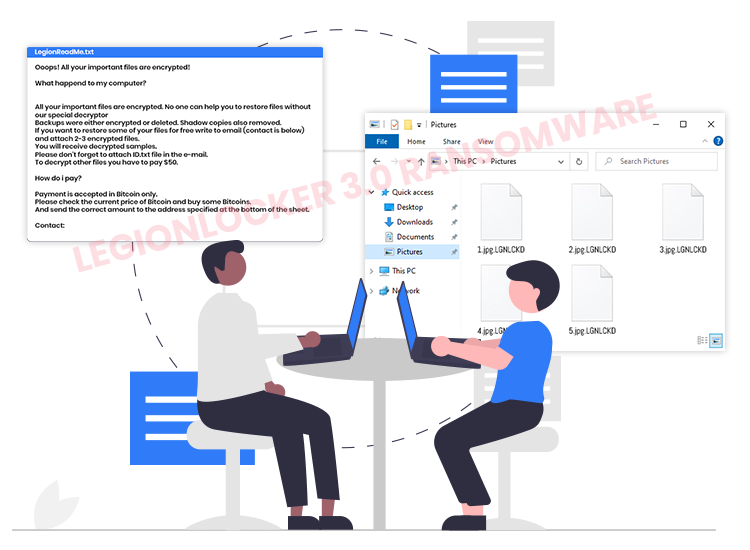
LegionLocker 3.0 ransomware is the name of a very destructive malware from cryptovirology which encrypts files as soon as it enters Windows computers. Victims of this vicious file-encrypting virus can’t access their files unless they decrypt them with the unique decryption key/software that they will have to purchase from the ransomware authors.
Typically, malware of this type encrypts all kinds of user files (such as photos, videos, audios, presentations, work documents, etc.) stored on the machine using a strong encryption algorithm and then creates a ransom note.
We suggest you to read this article right to the end if you want to learn how to completely and safely remove LegionLocker 3.0 ransomware from your computer.
What is LegionLocker 3.0 Ransomware?
This is the newest version of widespread ransomware called LegionLocker ransomware. Similar to its predecessor, v. 3.0 is created to encrypt the victim’s files and then demand a huge sum of ransom for the file recovery.
During the process of file encryption, the LegionLocker 3.0 ransomware appends the filenames of encrypted files with the “.LGNLCKD” extension. For example, a file named “mypicture1.jpg” would appear something similar to “mypicture1.jpg.LGNLCKD”, “mypicture2.jpg” as “mypicture2.jpg.LGNLCKD”, and so on – following encryption.
Once the file encryption process is complete, LegionLocker 3.0 generates a special ransom note titled “LegionReadMe.txt” and puts it into every folder containing encrypted files.
Like Mammon, Combo13, Rootiunik, and other ransomware-type infections, LegionLocker 3.0 uses the text file (ransom note) to let users know that all their files have been encrypted.
The ransom-demanding message further instructs the users to contact the attackers via the “emailLegionLocker@mail2tor.com” email address to get the payment-related details (such as cryptocurrency wallet address, price of a decryption software, and so on.).
How Does LegionLocker 3.0 Ransomware Infect Your Computer?
Ransomware or other file-locking viruses can be delivered to the targeted systems in numerous ways. The most common and popular ones are as follows:
- Malicious email attachments
- Exploit kits
- Drive-by downloading
- Malicious advertisements
- Removal media storage devices (e.g., pen drives)
- Untrustworthy downloading channels
- Illegal activation tools
- Pornographic and other shady websites
- Flaws of old and unpatched software applications
How to Remove Ransomware from your computer?
A strong and reliable anti-malware software is your best defense in the fight against online cybersecurity threats. Hence, to completely delete LegionLocker 3.0 ransomware infection, you are advised to perform a full system scan using a comprehensive virus and malware removal solution.


1 Comment